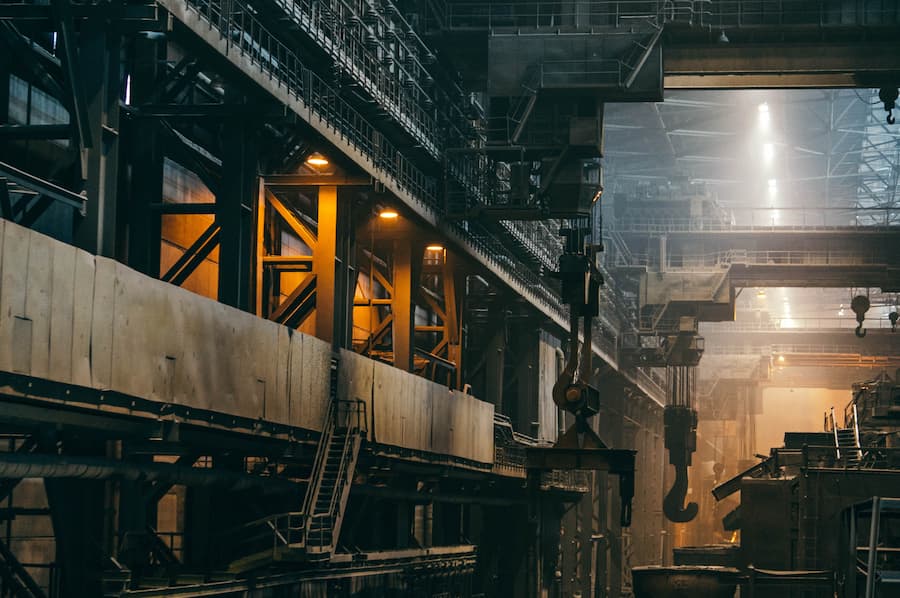Site Safety: 10 hazards lurking in your yard and how to fix them

Every workplace is different.
However for many of our customers, there are some common workplace hazards around the yard, warehouse, depot or workshop. Here are 10 things to look for around your workplace that could be made safer using simple, inexpensive solutions like safety signs, tape or bollards.
In the highly regulated construction industry, safety is often front of mind for business owners. Individual workers are also obligated to be aware of their surroundings and their actions to help maintain a safe workplace. Everyone wants to go home safe and healthy at the end of the day, and look out for our mates along the way.
A key area where a lot of hazards often exist is the yard, workshop or driveway areas. This is where vehicles, workers, visitors and delivery drivers cross paths. The combination of vehicles and people on foot can be a recipe for disaster without clear and thoughtful safety measures.
So, we’ve put together some prompts to get you thinking about whether you’ve addressed the hazards in your workplace.
10 workplace hazards to look out for
Inspired by Safe Work Australia’s traffic hazard checklist, here are 10 situations that might present a hazard to you or your team at work. Use these in conjunction with a risk assessment to ensure you’ve covered all bases, and always seek guidance from your workplace health and safety officer and the local regulations in your state.
-
Unclear shared areas
THE ISSUE: Do forklifts, work trucks, delivery vehicles or mobile plant share areas with workers and pedestrians? Are there physical barriers to stop them interacting?
THE FIX: Demarcate safe pedestrian zones and vehicle-only pathways with simple tools such as yellow and black floor marking tape, steel bollards, and appropriate safety signage.
-
Blind corners
THE ISSUE: Do vehicles queue in a way that could create risks to pedestrians, for example, crossing walkways or obstructing people’s view of vehicles? Do access pathways snake around corners presenting an obstructed view?
THE FIX: If you can’t re-route pedestrians in a different way, installing a convex mirror and appropriate safety signs help give advance warning of trucks or forklifts coming around corners.
-
Dark workshops and storage areas
THE ISSUE: Is low lighting a factor indoors? Is there the potential for collisions or injuries because the work area is poorly lit? For example, are overhead structures, stationary plant or stored items in shade (or glare) at different times of day?
THE FIX: Apart from installing more appropriate lighting, you can draw attention to sharp or protruding objects like racks of timber with flagging tape or safety flags such as those used on vehicles. Signage to denote tripping hazards can be helpful, along with amber glasses. Amber safety glasses are known to increase contrast and can be helpful in dimly lit areas.
-
Unfamiliarity
THE ISSUE: Are new people to your site properly inducted? Are they aware of the risks on site, as well as the correct vehicle and pedestrian pathways? Are visitors safe from vehicles when hitching and unhitching trailers, getting on and off vehicles and securing loads?
THE FIX: Ensure all visitors are directed to the site office before commencing any work on site, including deliveries. Anyone entering your site should be inducted to make them aware of hazards in the area. A visitor pass, induction sticker or a separate hi-vis vest for visitors that is a different colour to workers can all help staff identify visitors and take care when working around them.
-
Messy and haphazard storage
THE ISSUE: Are sharp or pointed objects such as tools and equipment stored in such a way that they don’t present a hazard? How do you draw attention to equipment that might cause injury?
THE FIX: Tidying up the work area is the obvious solution – make sure tools are stored pointed side down, or install hooks and racks to organise your equipment such as shovels, rakes and scrapers. Make sure safety signs designate special storage or task areas for example welding in progress or dangerous goods safety signs.
-
Pooled water and spills
THE ISSUE: Is drainage an issue – does water pool and cause slip hazards? Are oil leaks, solvent or fuel spills presenting a slipping hazard? Are hydrocarbons allowed to enter stormwater drains causing environmental damage?
THE FIX: Yards that have poor drainage can be complex to fix, but having clean up equipment on hand can help. A spill kit is vital to keeping your work area tidy and reducing the risk of slips on liquids such as petrol, oil, solvents and water. If your drains are being blocked by silt and organic matter, good old hessian sandbags are a cheap and easy way to mitigate this. For more serious cases, fitting drains with a geotextile ‘drain warden’ can help trap hydrocarbons and oils before they enter the stormwater system.
-
Neglected yards
THE ISSUE: Do pipes, pits or fence panels that are stored outdoors for long periods attract snakes or spiders? Equipment such as concrete pipes, tubular steel items such as temporary fence panels, concrete pits and metal excavator buckets provide a warm comfortable habitat for snakes and spiders, especially when grass is left to grow in the yard.
THE FIX: Make sure you’ve got a well-stocked first aid kit close by, and specifically a snake bite kit if you’re in an area where brown snakes, red-bellied black snakes or funnel webs are known to inhabit. If you see a snake – don’t approach it! Apart from the obvious danger, Australian native snakes are a protected species and it is illegal to kill them. Have the number of your local snake catcher on display in the site office too.
-
Bottlenecks
THE ISSUE: Is work scheduled to minimise interaction between vehicles and people? e.g. loading and unloading at night, just before work hours, or when people leave the work area for meal breaks or smoking breaks?
THE FIX: The more people working in close proximity, the higher the chance of an accident. If possible, stagger break times and and avoid mass deliveries and pickups at any one time. Ensure areas where people congregate are cordoned off away from vehicles, such as lunch areas and designated smoking areas. can help indicate these areas, along with simple tools such as plastic chain and T top bollards to cordon off areas or indicate walkways.
-
Confusing traffic flow
THE ISSUE: Are there periods when traffic volumes are higher? Are there certain times when there are more people entering or leaving the workplace, for example, lunch breaks?
THE FIX: Make it clear who needs to give way. Highly visible safety signs with messages such as give way to pedestrians or immediately recognisable give way triangluar signs act as a constant reminder to stay alert and give way to others.
-
Not learning from near misses
THE ISSUE: Listen to staff and co-workers: what are they telling you about dangerous situations or near misses? Take a look at your WHS records, injury reports and near misses. Can you identify any trends or are accidents that are always happening in the same location?
THE FIX: Incident reports offer insight into where you can improve safety at work. Use them! Find out what problems are recurring and use the hierarchy of workplace controls to remove or reduce the hazards. Sometimes something simple and inexpensive can make your workshop much safer.
Jaybro has your site safety needs covered!
- SAFETY SIGNS
- SPEED HUMPS & BOLLARDS
- PEDESTRIAN BARRIERS
- SPILL KITS
- DANGEROUS GOODS CABINETS
- CIGARETTE DISPOSAL UNITS
Remember, this is a guide only to help get you thinking about site safety. Always refer to the individual regulations in your area, along with specific requirements for your industry. Get in touch with the workplace health and safety authority in your state for more information or talk to your WHS Officer.
 Sign In
Sign In 

